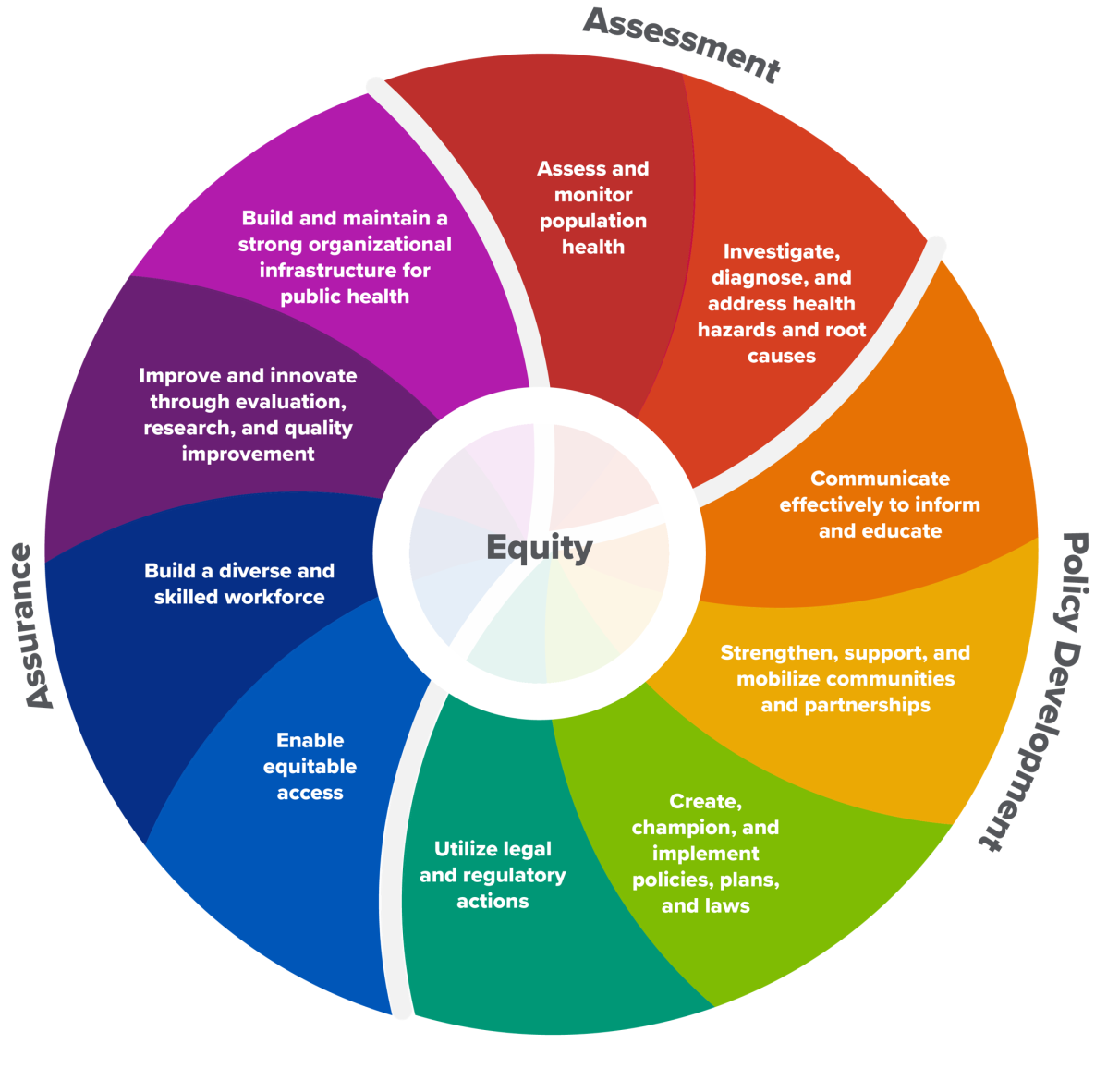Environmental Public Health and the 10 Essential Services
Use this website to identify how environmental health programs
- Help deliver the 10 Essential Public Health Services in their communities.
- Link to and support broader public health initiatives such as public health accreditation.
What are the 10 Essential Public Health Services?

Essential services 1 and 2 are aligned to the Assessment core function (1: Assess and monitor population health; 2: Investigate, diagnose, and address health hazards and root causes).
Essential services 3 through 6 are aligned to the Policy Development core function (3: Communicate effectively to inform and educate; 4: Strengthen, support, and mobilize community partnerships; 5: Create, champion, and implement policies, plans, and laws; 6: Utilize legal and regulatory actions).
Essential services 7 through 10 are aligned to the Assurance core function (7: Enable equitable access; 8: Build a diverse and skilled workforce; 9: Improve and innovate through evaluation, research, and quality improvement; 10: Build and maintain a strong organizational infrastructure for public health).
The 10 Essential Public Health Services provide a framework for public health and promote the health of all people in all communities. To achieve equity, these services were revised in 2020 to actively promote policies, systems, and overall community conditions that enable optimal health for all and seek to remove systemic and structural barriers that have resulted in health inequities.
- Assess and monitor population health status, factors that influence health, and community needs and assets
- Investigate, diagnose, and address health problems and hazards affecting the population
- Communicate effectively to inform and educate people about health, factors that influence it, and how to improve it
- Strengthen, support, and mobilize communities and partnerships to improve health
- Create, champion, and implement policies, plans, and laws that impact health
- Utilize legal and regulatory actions designed to improve and protect the public’s health
- Assure an effective system that enables equitable access to the individual services and care needed to be healthy
- Build and support a diverse and skilled public health workforce
- Improve and innovate public health functions through ongoing evaluation, research, and continuous quality improvement
- Build and maintain a strong organizational infrastructure for public health
Who can use this information?
This information is for health department leaders, environmental health leadership, accreditation and performance improvement staff, and other program staff.
How does this information relate to public health accreditation?
This information provides examples of activities that could contribute to health department accreditation or reaccreditation.*
These examples relate to the Public Health Accreditation Board (PHAB) Version 2022 Standards and Measures for Initial Accreditation. This resource can also be valuable for health departments accredited under Version 1.5 and those seeking reaccreditation.
Acknowledgments
We collaborated with CDC’s Center for State, Tribal, Local, and Territorial Support to develop these insights into applying the 10 Essential Public Health Services to environmental public health practice.
This moves away from our previous approach of having a separate set of essential services specific to environmental health programs. These services and the 2004 Environmental Public Health Performance Standards they were based on served as the foundation for helping environmental health programs engage in performance improvement activities for many years. These standards are still available for programs who want to use them.
More Information
- 10 Essential Public Health Services Toolkit (Public Health National Center for Innovation)
- 10 Essential Public Health Services
- Public Health Accreditation Board (PHAB)
- Environmental Public Health Performance Standards
- More practice resources for environmental health professionals
*Examples are not intended to provide all definitive linkages between PHAB standards and environmental health activities. Completion of these activities does not guarantee conformity to PHAB documentation requirements.